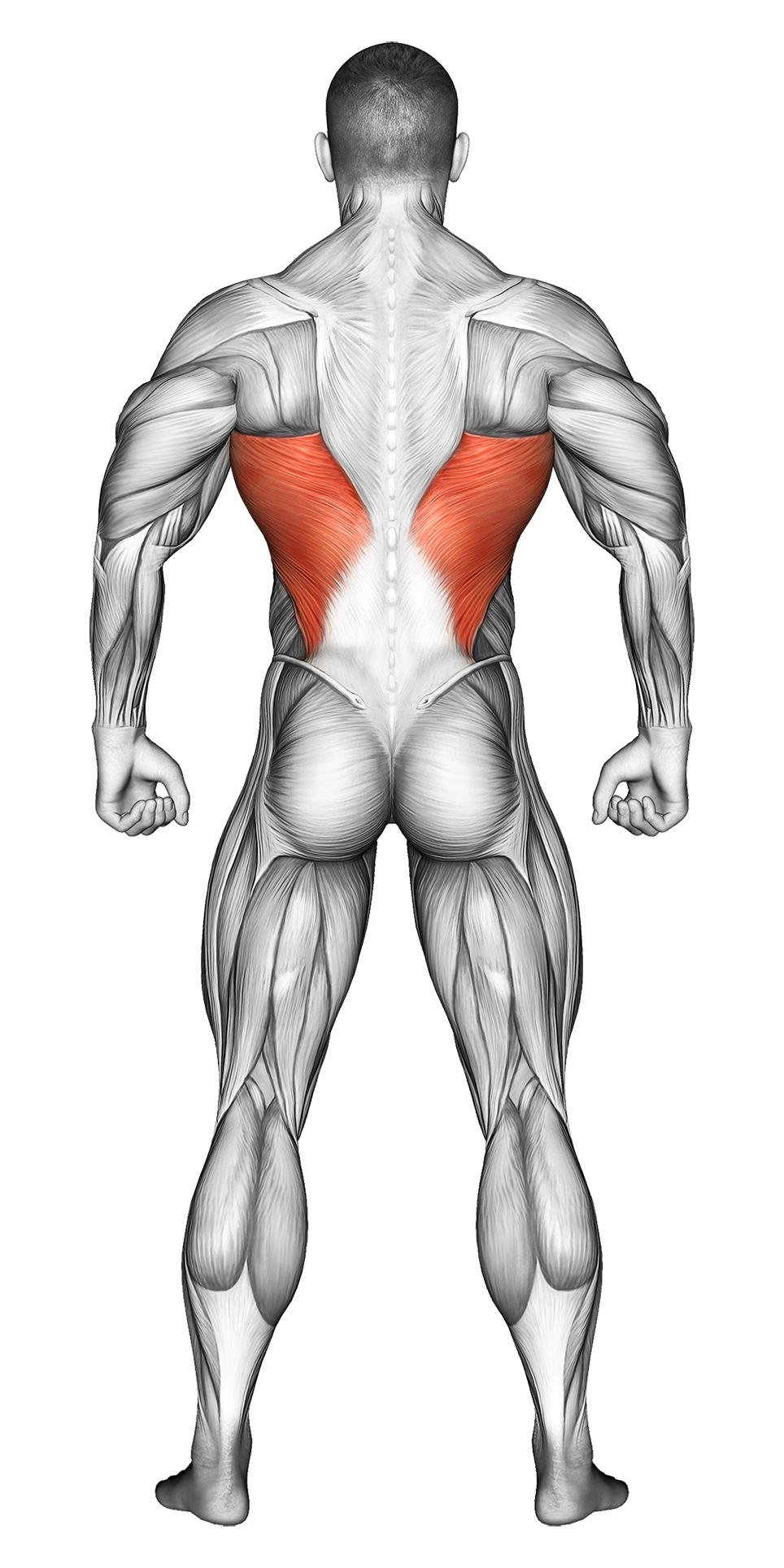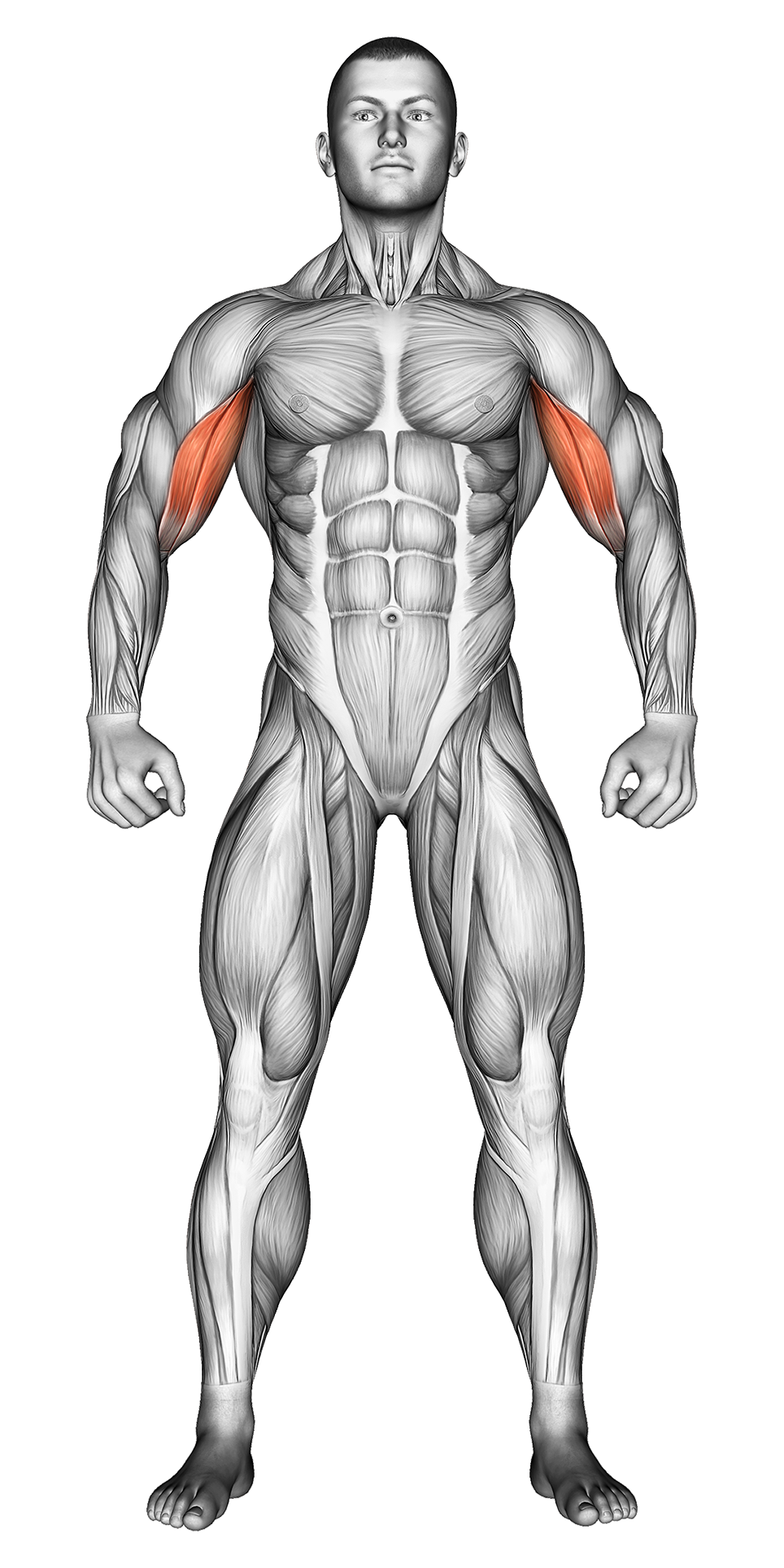One Arm Dumbbell Row: Video Tutorial & Exercise Guide
| Workout | One Arm Dumbbell Row |
| Primary Muscle Group | Lats |
| Secondary Muscle Group | Biceps |
| Equipment Required | Dumbbell, Bench |
| Force Type | Pull |
| Mechanics | Compound |
| Exercise Type | Strength |
| Difficulty | Intermediate |
One Arm Dumbbell Row: Video Tutorial & Exercise Guide
Muscle Groups
- Primary Muscle Group- Secondary Muscle Group
One Arm Dumbbell Row - Step-by-Step Guide
One Arm Dumbbell Row Overview
Benefits of One Arm Dumbbell Row
One Arm Dumbbell Row Pro Tips & Advanced Techniques
Progression Plan for One Arm Dumbbell Row
Frequently Asked Questions (FAQs) Of One Arm Dumbbell Row
Secondary Muscles
How to do One Arm Dumbbell Row – Step-by-Step Guide
- Step 1: Place your left knee and hand on a bench for support. Your back should be flat, and your torso parallel to the ground. Hold a dumbbell in your right hand, arm fully extended toward the floor, with your palm facing inward (neutral grip).
- Step 2: Keep your back flat and core engaged. Start the movement by pulling the dumbbell toward your lower ribcage, leading with your elbow.
- Step 3: Squeeze your shoulder blade at the top of the movement, keeping your elbow close to your body.
- Step 4: Slowly lower the dumbbell back to the starting position, extending your arm fully.
- Step 5: Complete the desired number of repetitions, then switch sides and repeat with the opposite arm.
One Arm Dumbbell Row Overview
The One Arm Dumbbell Row is an excellent compound exercise that targets the muscles of the upper back, including the lats, traps, and rhomboids. This unilateral movement ensures each side of your body is working independently, helping to correct muscle imbalances and improve strength.
This exercise is a staple for building a strong, well-developed back and is frequently included in strength training routines to enhance posture, stability, and upper-body pulling strength.
Benefits of One Arm Dumbbell Row
The One Arm Dumbbell Row effectively isolates the back muscles, helping to build strength and muscle mass in the lats, rhomboids, and traps. By performing the movement one arm at a time, it corrects muscle imbalances and ensures even development on both sides of the body. Additionally, this exercise engages the core, improving stability and balance.
The unilateral movement also improves coordination and helps develop a stronger mind-muscle connection, making it ideal for athletes or anyone looking to enhance their overall upper-body strength.
One Arm Dumbbell Row Pro Tips & Advanced Techniques
Keep your back flat throughout the movement to avoid placing unnecessary stress on the lower back. Focus on pulling the dumbbell toward your lower ribcage to fully engage the back muscles. For added intensity, pause for a second at the top of the movement, squeezing your shoulder blades together before lowering the dumbbell. You can also increase the weight or slow down the eccentric (lowering) phase to challenge your muscles further.
Progression Plan for One Arm Dumbbell Row
| Level | Sets | Reps | Progression Tips |
|---|---|---|---|
| Beginner | 2-3 | 8-10 per arm | Start with a lighter dumbbell, focusing on form and control before increasing weight. |
| Intermediate | 3 | 10-12 per arm | Gradually increase the weight while maintaining control throughout the entire movement. |
| Advanced | 4 | 12-15 per arm | Use heavier weights, add a pause at the top of the movement, or perform the exercise slower to increase time under tension. |
Frequently Asked Questions (FAQs) of One Arm Dumbbell Row
What muscles do One Arm Dumbbell Rows target?
This exercise primarily targets the upper back muscles, including the lats, rhomboids, traps, and biceps, while also engaging the core for stability.
Can beginners perform One Arm Dumbbell Rows?
Yes, beginners can perform this exercise using lighter dumbbells and focusing on proper form before increasing the weight.
How can I make One Arm Dumbbell Rows more challenging?
To increase difficulty, use a heavier dumbbell, slow down the lowering phase, or add a pause at the top of the movement for extra time under tension.
What common mistakes should I avoid during One Arm Dumbbell Rows?
Avoid rounding your back or twisting your torso. Keep your back flat and focus on using your back muscles to lift the dumbbell rather than relying on your arms or momentum.
How often should I include One Arm Dumbbell Rows in my workout routine?
Incorporate this exercise 2-3 times per week as part of your upper body or back workout for optimal strength and muscle development.
Share

